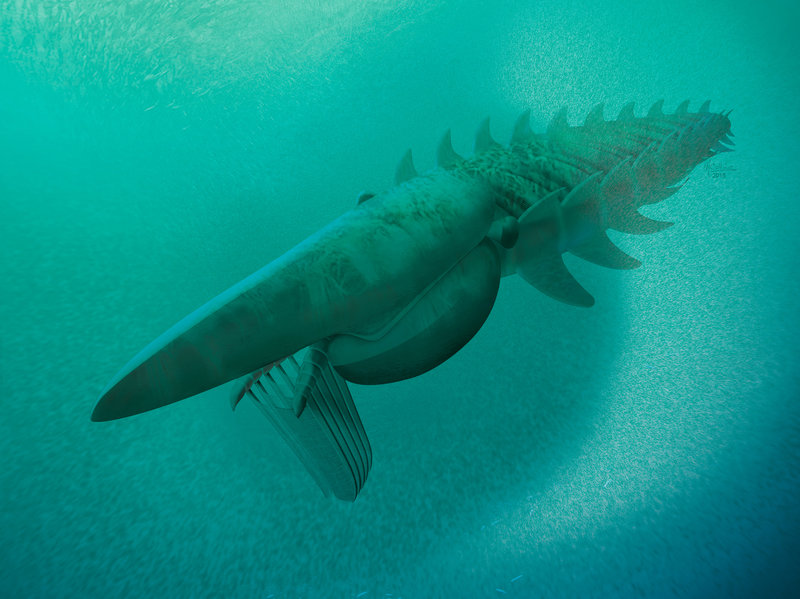Score another win for the arthropods, the group of animals that include insects, arachnids, myriapods, and crustaceans. Scientists have uncovered the remains of one of the first arthropods ever that could be described as a “man-sized, swimming centipede” or a “7-foot lobster without claws” that also happens to be 480 million years old.
The strange creature was originally discovered by a Moroccan collector who gave it to a team of scientists who spent 500 hours slowly removing the rocky casing to uncover an anomalocaridid that was the biggest animal of any kind that existed in the planet at the time.
Yale paleontologist Peter Van Roy led the long, slow process and notes it evolved during the Ordovician geological period. Also known as the Great Ordovician Biological Diversification Event that lasted 25 million years, a plethora of new oceanic life forms came on the scenes including plankton. It turns out, this creature was a filter feeder that fed on the new species of ocean creatures.
“(It was) the biggest diversification in marine animal life that we’ve ever known,” says Van Roy. “If you’re filter-feeding, of course, you probably are not going to be able to defend yourself. You’re not going to have, like, big fangs or anything. So, one way of escaping from predation is just by growing so massive that there’s … simply nothing else that can tackle you.”
Van Roy describes the creature in this week’s issue of the journal Nature and credits Ben Moula with finding it.
[via NPR]



